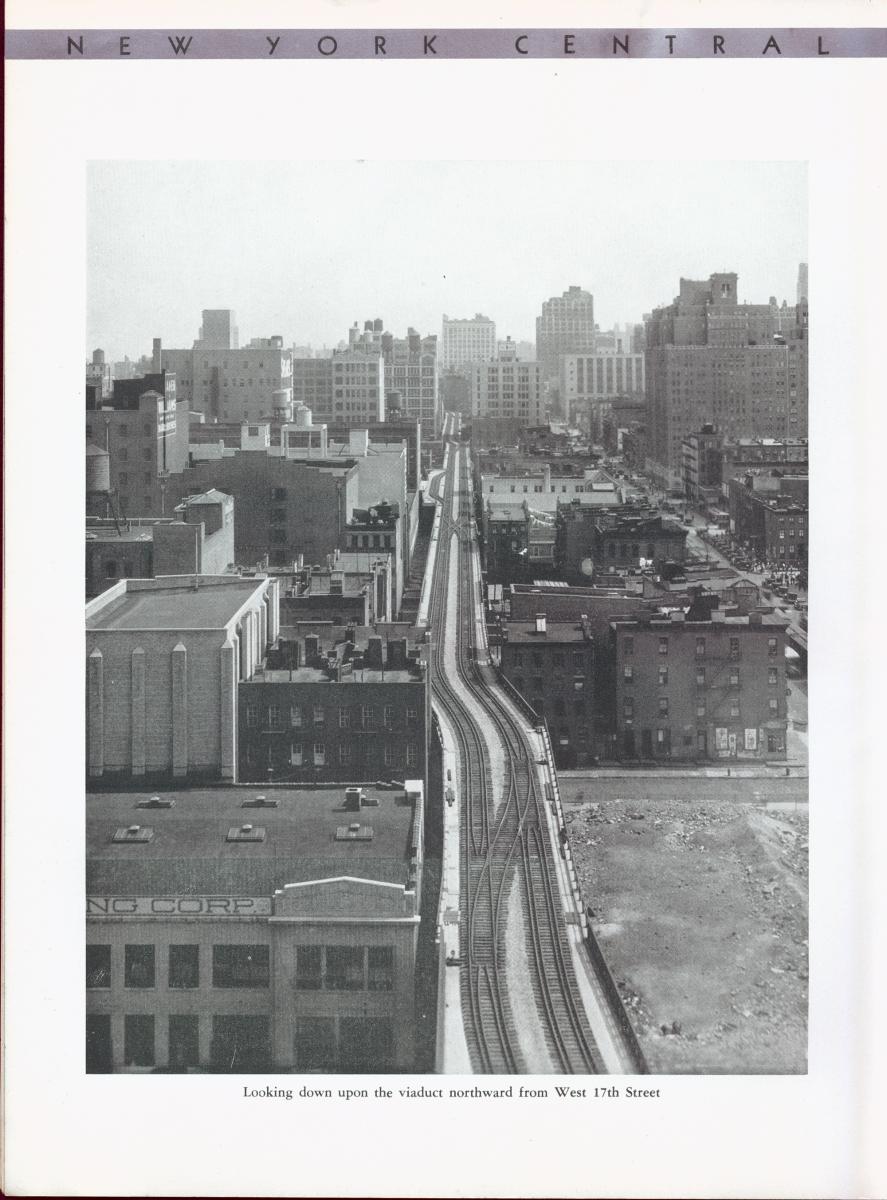The “High Line” on Manhattan’s Lower West Side has earned great acclaim as an example of adaptive reuse and as an innovative linear park. Two recent additions to Hagley’s large Pennsylvania Railroad archive describe the origins of the “High Line” as a solution to street congestion in the early twentieth century.

The Pennsylvania’s arch-competitor, the New York Central Railroad built the line to preserve its all-rail access into New York’s manufacturing and meatpacking districts, which the PRR and other railroads could reach only by boating across the Hudson River.
The tracks were built in the streets before the Civil War, long before the area around them was built up. By 1900 the slow-moving trains were a nuisance and the street had earned the nickname “Death Avenue.”
Political wrangling over exactly where the tracks were to be moved, who should own them, and who should pay for the work kept the project on hold until the 1920s. The first section finally opened in 1934.


The tracks were on private property to avoid darkening the streets below (and troublesome city franchises), with connections to the second floors of industrial buildings. Eventually, the industries moved out and through an inspired action the structure was saved and converted into a parkway in a now gentrified area.
A 1934 brochure from the grand opening in the PRR records gives both a short history of the West Side Improvement and a photographic record of its use as a freight line, along with supporting correspondence. A second collection of documents from Conrail’s predecessor railroads includes a bird’s eye view of the entire west side line and a copy of the contract between the railroad and the city.
Images from Pennsylvania Railroad Company and the Penn Central Transportation Company records (Accession 1807/1810) Box 1939, West Side Tracks, 1917-1934.
For more information on these collections, please contact askhagley@hagley.org.
Christopher T. Baer is the Assistant Curator of Manuscripts and Archives at Hagley Museum and Library.
